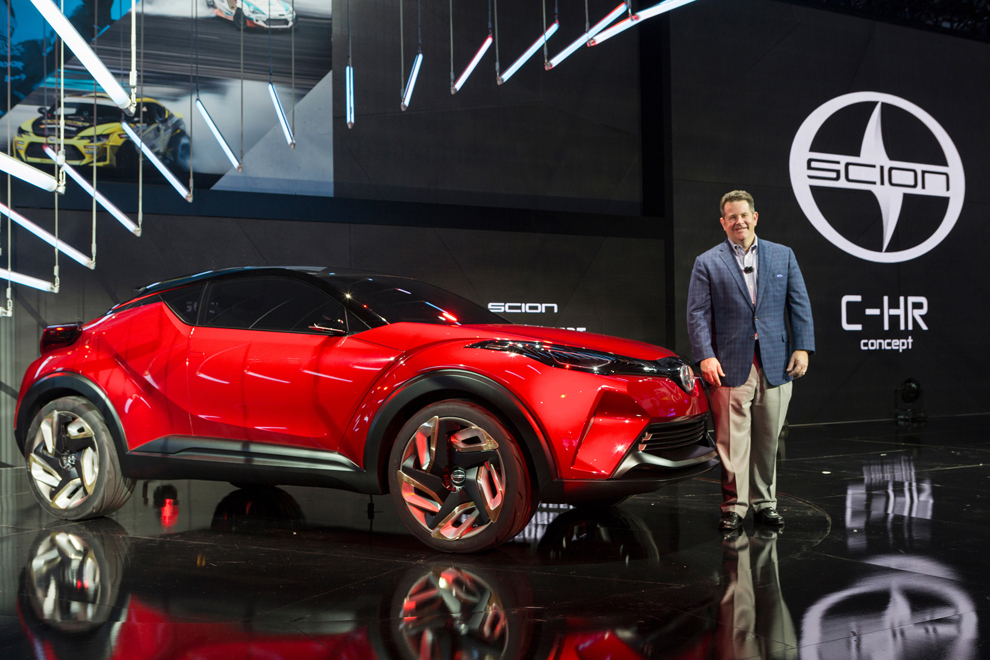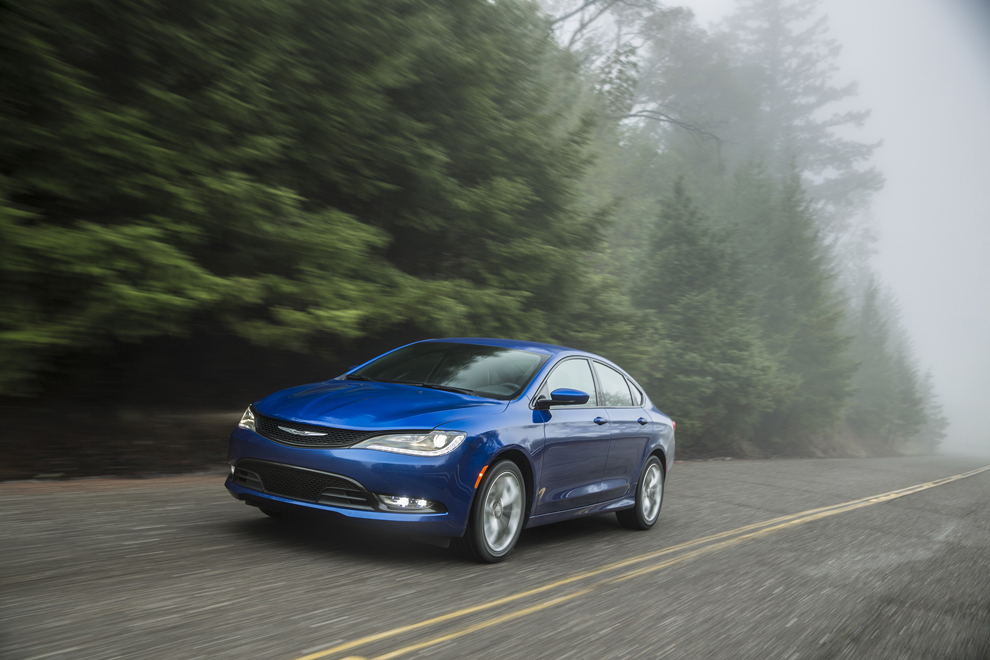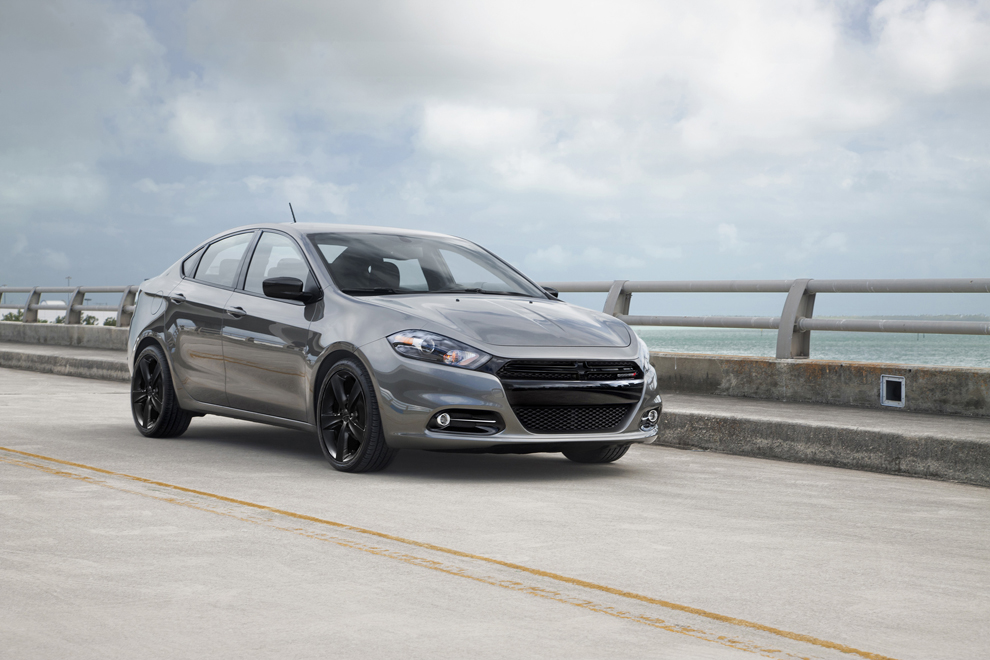The combination of falling gas prices and the boomlet of higher-riding crossovers is forcing automakers to stop making certain passenger cars that don’t generate sufficient sales or profits to satisfy Wall Street or American consumers.
Last month, Fiat Chrysler CEO Sergio Marchionne said production of the Dodge Dart compact and Chrysler 200 midsize sedan would stop in the near future.
“There has been a permanent shift toward utility vehicles and pickup trucks,” Marchionne said.
“And we have seen, certainly in terms of our ability to meet market demand, some severe restriction in terms of the dexterity of our manufacturing system to accomplish that end.”
How times change.
In November 2009, Marchionne said, “In this market, if you don’t have a competitive midsize sedan, you’re a nobody.”
But Fiat Chrysler’s not alone in ditching passenger cars.
Earlier this month, Toyota said it would scrap its youth-oriented Scion brand, which targeted younger consumers with quirky, sometimes cube-shape vehicles.
Scion sales peaked at 173,000 in 2006, and aside from a modest resurgence in 2012, withered to 56,167 in 2015. Remaining stocks of Scion models will be sold as Toyotas for now.
Other manufacturers are shifting small and midsize car production to Mexico. Last year, Ford decided to stop building the Focus compact car, the C-Max hybrid and C-Max Energi plug-in hybrid at the Michigan Assembly Plant in Wayne, Mich., by 2018 and move production out of the U.S., most likely to Mexico, where it already builds the subcompact Fiesta and is consolidating all midsize Fusion production.
Jack Vintartas of McHenry, Ill., started shopping last fall for a Chevrolet Sonic subcompact, but with a 5-year-old son, his wife reminded him they needed more cargo space. So they bought a Mitsubishi Outlander Sport, a compact crossover that competes with such models as Ford Escape, Toyota RAV4 and Honda CR-V.
“My wife felt that especially during winter we’d be a little safer with an SUV-type vehicle,” Vintartas said. “It sits quite a bit higher than a car and the greater storage space was definitely a plus.”
This shift from subcompact and compact cars to higher-riding and not much larger crossovers and sport wagons is not new, but it’s accelerating.
In January, when Americans bought the same number of new vehicles as they did a year earlier, sales of small cars fell 11.3 percent while sales of sport wagons and crossovers rose 10.3 percent.
Falling gas prices also have nudged consumers to look at larger vehicles than they may have considered three years ago.
It’s no secret that profit margins correlate strongly with vehicles’ size and price, so this trend is that industry financial folks call a “tailwind.”
Investors now expect automakers to earn a steady 10 percent gross profit (sales divided by number of vehicles before taxes). While pickups, SUVs and luxury models exceed that, products in the middle or the small end of the spectrum fall short.
It’s unclear whether more small passenger cars will be dropped, but even General Motors, which will boost profit margins on its new Chevrolet Malibu and Cruze by about $1,500 per car because of a move to Mexico and some other factors, is closely watching the profitability of each model.
“We continue to re-evaluate how we deploy capital, where we deploy capital in order to drive appropriate returns across the business,” Chuck Stevens, GM chief financial officer, said in a recent interview.
“How do you effectively deploy capital in those segments with lower margins like small cars and compact cars?”
The bigger-is-better phenomenon is setting the stage for a political showdown in the next year over the government’s Corporate Average Fuel Economy standards.
In the wake of the 2009 financial crisis, the Obama administration backed and Congress approved a standard that would require automakers to reach a fleet average of 54.5 miles per gallon by 2025.
The actual target will vary because the regulation includes something called a “footprint adjustment” provision. That’s a bureaucratic term for allowing different mpg requirements depending on a company’s mix of passenger cars and light trucks.
“Each manufacturer has a different target,” said John Graham, dean of Indiana University’s School of Public and Environmental Affairs. “If you sell more small cars, you have a stricter (higher) target.”
So Marchionne’s decision to kill the Dart and 200 and produce more Jeeps and Ram pickups could have the effect of reducing the fuel-economy goal FCA must meet.
The market that told him in 2009 that only a “nobody” would lack a competitive midsize sedan now tells him that Americans prefer the Jeep SUVs, crossovers and Ram pickups that generate nearly all his company’s profits.
Of FCA’s January U.S. sales, 80 percent were light trucks, already the highest truck concentration in the industry.
In 2017, the National Highway Traffic Safety Administration will seek public comment on whether the fuel economy standard should be revised for model years 2022 through 2025, Graham said.
A decision on whether to change the 54.5 mpg target is expected in early 2018.
Despite lighter-weight vehicles, turbo chargers, stop-start technology, hybrids and electric vehicles, automakers and consumers have a long way yet to go to come anywhere close to the 2025 goal.
In model year 2014, the last year the EPA
has analyzed, the adjusted fuel economy for new cars remained at 27.9 miles per gallon, while trucks improved by 0.6 mpg to a new record of 20.4 mpg.
More recent data from the University of Michigan Transportation Research Institute calculates an average fuel economy each month of all vehicles –passenger cars and light trucks combined. The institute’s latest report shows an industry average of 25.1 mpg in January, down from a peak of 25.8 in August 2014.
Already the old battle lines are resurfacing between industry leaders and their congressional advocates on one side and environmental activists and certain regulators on the other.
“There has always been auto industry hostility to these standards,” said Dan Becker, director of the Safe Climate Campaign and a longtime environmentalist.
“A year ago, Marchionne was quoted as saying he wanted the government to push back the date for reaching 54.5 mpg.”
Dave Sullivan, an industry analyst with AutoPacific based Ann Arbor, Mich., said some environmentalists might be missing the nuances behind changing consumer preferences.
No question some buyers are choosing larger vehicles. Others, such as the Vintartas family, are sticking with small crossover models that offer more storage space and equal or better fuel economy than cars of the same size.
“Americans are finally figuring out what Europeans have known for years – that hatchback style vehicles are more efficient in space and storage,” Sullivan said. “That’s why a Buick Encore (crossover) can sell so well and a Buick Verano (subcompact car) does not.”
From 2010 until now, gas prices have plunged from nearly $4 a gallon to less than $2. During that time, the split between passenger cars and light trucks has gone from 52 percent cars and 48 percent light trucks in 2009 to 43 percent cars and 57 percent light trucks in 2015, according to Ward’s Auto.
“The industry is trying to build what people want while still complying with what the government says they should build,” Sullivan said.
“Right now, however, regulator and consumer demands are pulling in opposite directions. Now, if someone wanted to stand up and propose a higher gasoline tax, that gap might be smaller.”
Send questions/comments to the editors.





Success. Please wait for the page to reload. If the page does not reload within 5 seconds, please refresh the page.
Enter your email and password to access comments.
Hi, to comment on stories you must . This profile is in addition to your subscription and website login.
Already have a commenting profile? .
Invalid username/password.
Please check your email to confirm and complete your registration.
Only subscribers are eligible to post comments. Please subscribe or login first for digital access. Here’s why.
Use the form below to reset your password. When you've submitted your account email, we will send an email with a reset code.